Casa de Vila Nova – Vinho Verde, Portugal
Monica Tindall
Hopefully, you’ve noticed that I’ve been diving deep into Portugal’s wine culture and recently became hooked on Vinho Verde and its suitability for the Southeast Asian market. Vinho Verde is often a blend of indigenous grapes. However, today we have a special tasting where we discover the potential of each type in single varietal wines from Casa de Vila Nova.
Casa de Vila Nova is a family-owned estate that has been in the Lencastre family for over eight centuries. Siblings Bernardo, Luísa, Sofia, and Filipe are business partners in the property, home to a stone tower that dates back to the 12th century, a “Grand House” furnished with antiques from the 1700s, and a family chapel constructed in the 1800s. Over 20 hectares of native varieties were planted in the late 1970s. Via smart investments and long-term leasing agreements with local growers, this area has now increased to almost 200 hectares.
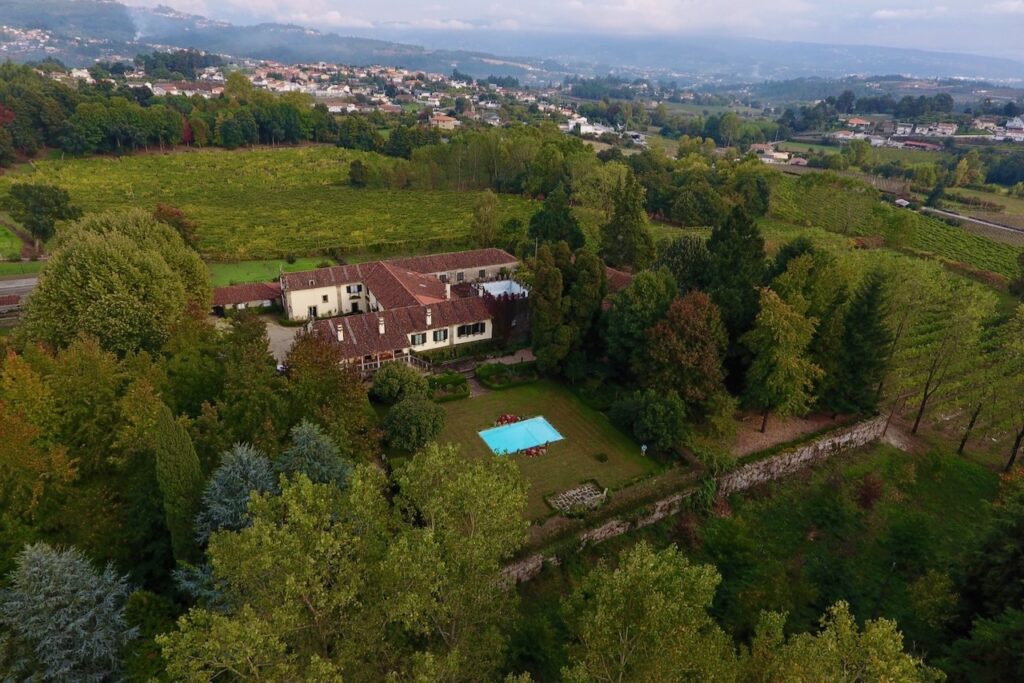

Their vineyards, situated in the Sousa sub-region, profit from the distinctive features of the Vinho Verde region, such as influences from the Atlantic Ocean and its distinctive soils. After being meticulously hand-harvested, the grapes are swiftly brought to the winery for gentle pressing and temperature-controlled fermentation. The wine is matured on the lees before bottling.
Since starting with 15k bottles in 2009, they have grown to produce about three million bottles annually. Their family crest is depicted on their pastel labels, and most of the white grapes used in their wines are local, with a few imported varietals. All wines are vegan-friendly. Export manager Rui Miranda, articulately and with great enthusiasm for the product, guides us through today’s tasting.
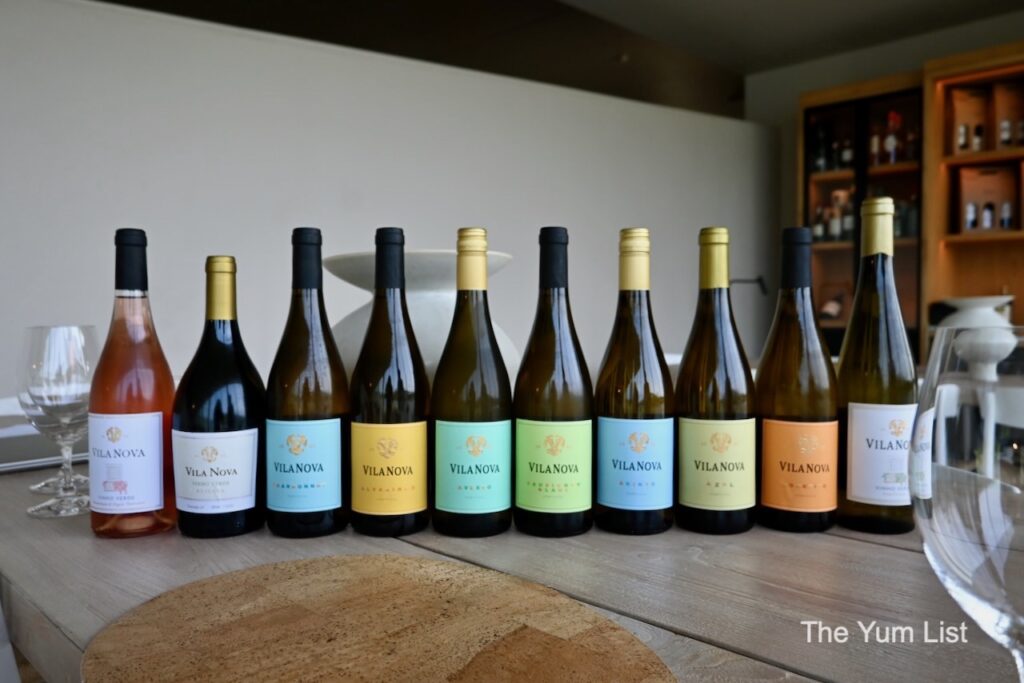
Vila Nova, Vinho Verde, 2022
We get our bearings with a traditional blend of Loureiro and Fernao Pires – Vila Nova, Vinho Verde, a fresh, simple white wine with light carbonation. It is pale yellow with floral, citrus, and tropical fruit aromas. The flavour is of ripe melon, sherbet lemon, and spritz. Its 11% ABV makes it slightly more elegant and structured than traditional Vinho Verde wines, which often come in under 10% ABV. This easy-drinking party wine is perfect for summer gatherings.
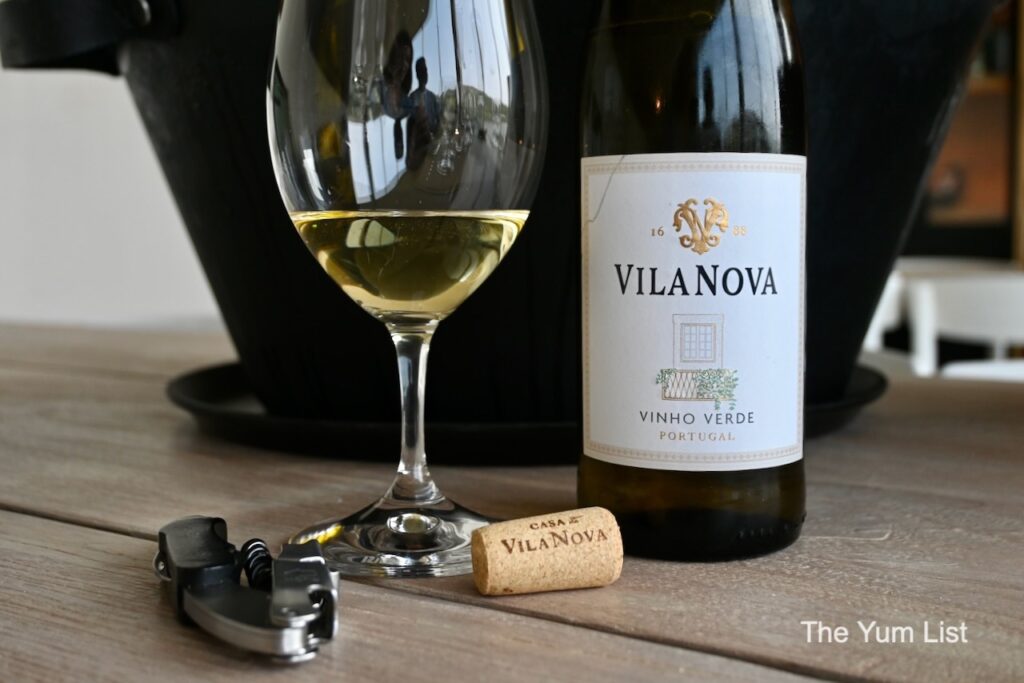
With the foundation set, we have a highly educative (and delicious) session exploring the single-varietal grapes of the Vinho Verde region.
Vila Nova, Loureiro, 2022
Loureiro is one of the most used grapes in the Vinho Verde region, and it produces aromatic wines with floral and fruit notes. Vila Nova Loureiro is a little more structured and precise than some other Loureiro wines, and it has a balanced and full-bodied flavour. It is a good wine to drink on its own, but it also pairs well with food.

Vila Nova, Azal, 2022
Azal is a light, citrine-coloured wine with a pleasant, fruity scent that is zesty and fresh. It was once the most-used grape in the region, but poor production methods meant its high acidity required it to be balanced with sugar and CO2. Now with contemporary production methods and attention to growing conditions, this particular wine is the freshest of the range, with a hint of salinity due to the Atlantic influence. It is perfect for enjoying poolside without overthinking.

Vila Nova, Arinto, 2022
Arinto is one of the most-used grapes in Vinho Verde and is commonly found in blends across the country. As a single varietal, it’s a dry, richly textured, crisply refreshing white. It is a more traditional approach to white wine, with high acidity and aromas of white flowers and citrus lemon notes following over to the palate.
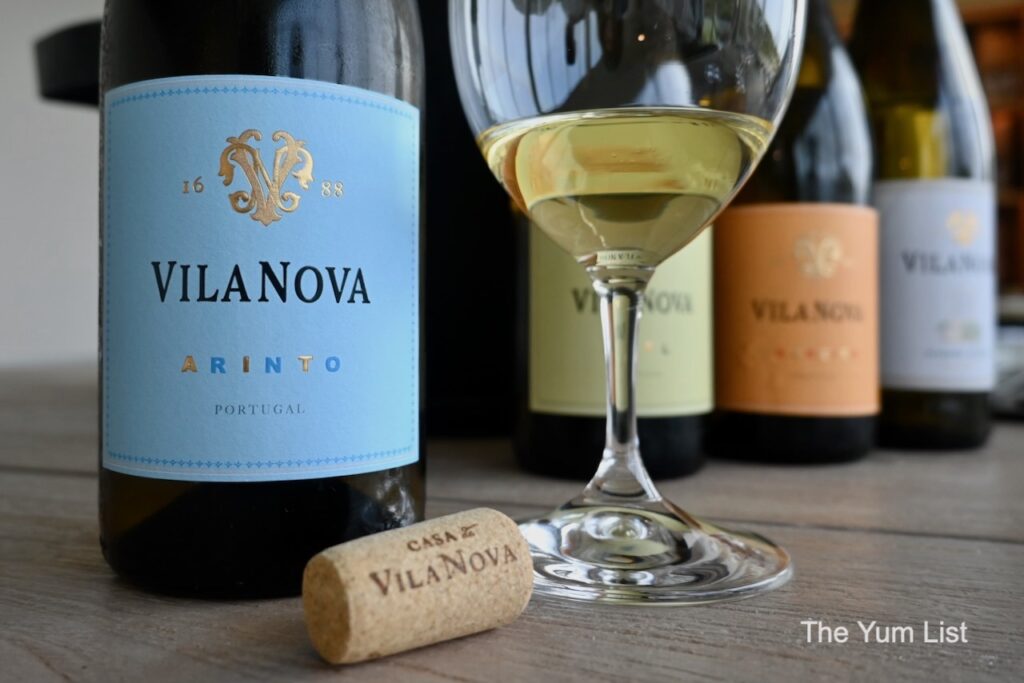
Vila Nova, Avesso, 2022 & Vinho Verde, Reserva, 2019
Avesso is known for its aromatic, citrusy, and fruity flavours. The wine has a vivid straw colour, greenish reflections, and a delicate, nuanced fruity aroma. It reveals a fresh, mellow, and enduring finish on the palate. Later we try the same single varietal in Vila Nova’s Vinho Verde, Reserva, 2019, which has been fermented in used French oak for 12 months and aged in the bottle for at least two years. It’s all of the above, only more delicate and integrated with a faint sense of oak. While this wine is delicious right now, it also has the potential to age for up to 10 years.

Vila Nova, Alvarinho, 2022
Vila Nova’s Alvarinho stands out as the most recognisable grape from the region, thanks to the Spaniards’ efforts in introducing it to the world (known as Albariño in Spain). It presents two realities of the same grape variety, boasting remarkable aromatics with tropical notes and enhanced structure. Its bright straw hue complements complex aromas of fruits, blooms and nutty elements. The result is a smooth and full-bodied profile, making it an excellent food wine choice.
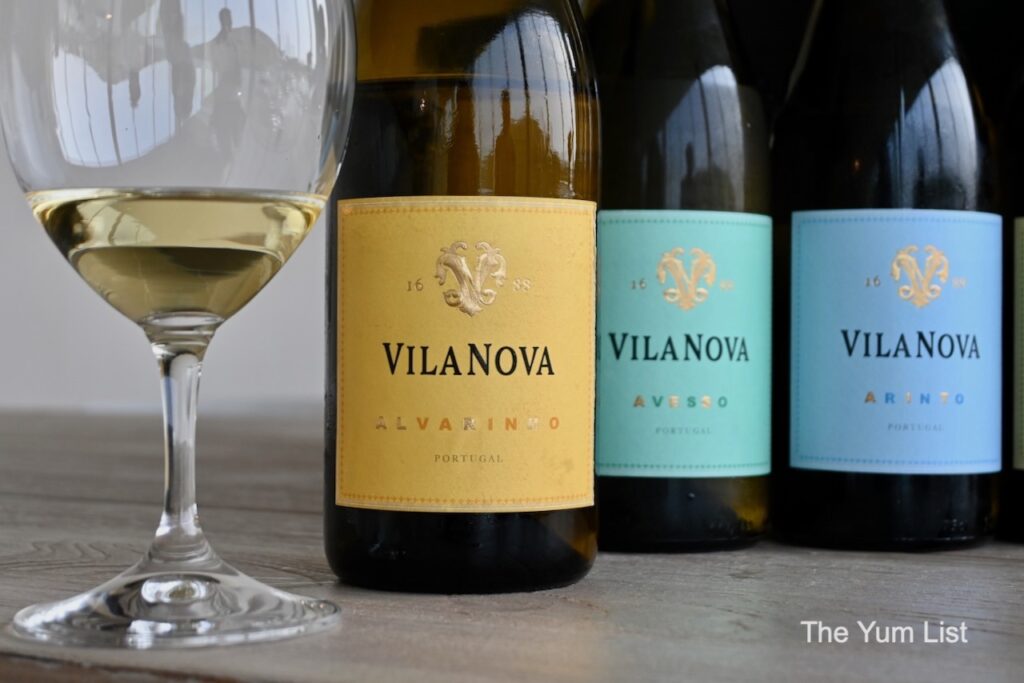
Whether you’re a traditionalist or an adventurous wine drinker, Casa de Vila Nova has something for everyone. Their blend of tradition and innovation ensures they’ll remain a prominent player in the Vinho Verde region. I’m excited to see what they do next and hope to find more of their product in Southeast Asia soon.
casadevilanova.com @vilanovawines
Find more recommendations for gourmet travel in Portugal here and stay up-to-date with our latest international finds here and here.


I see a private swimming pool.
I love wine!